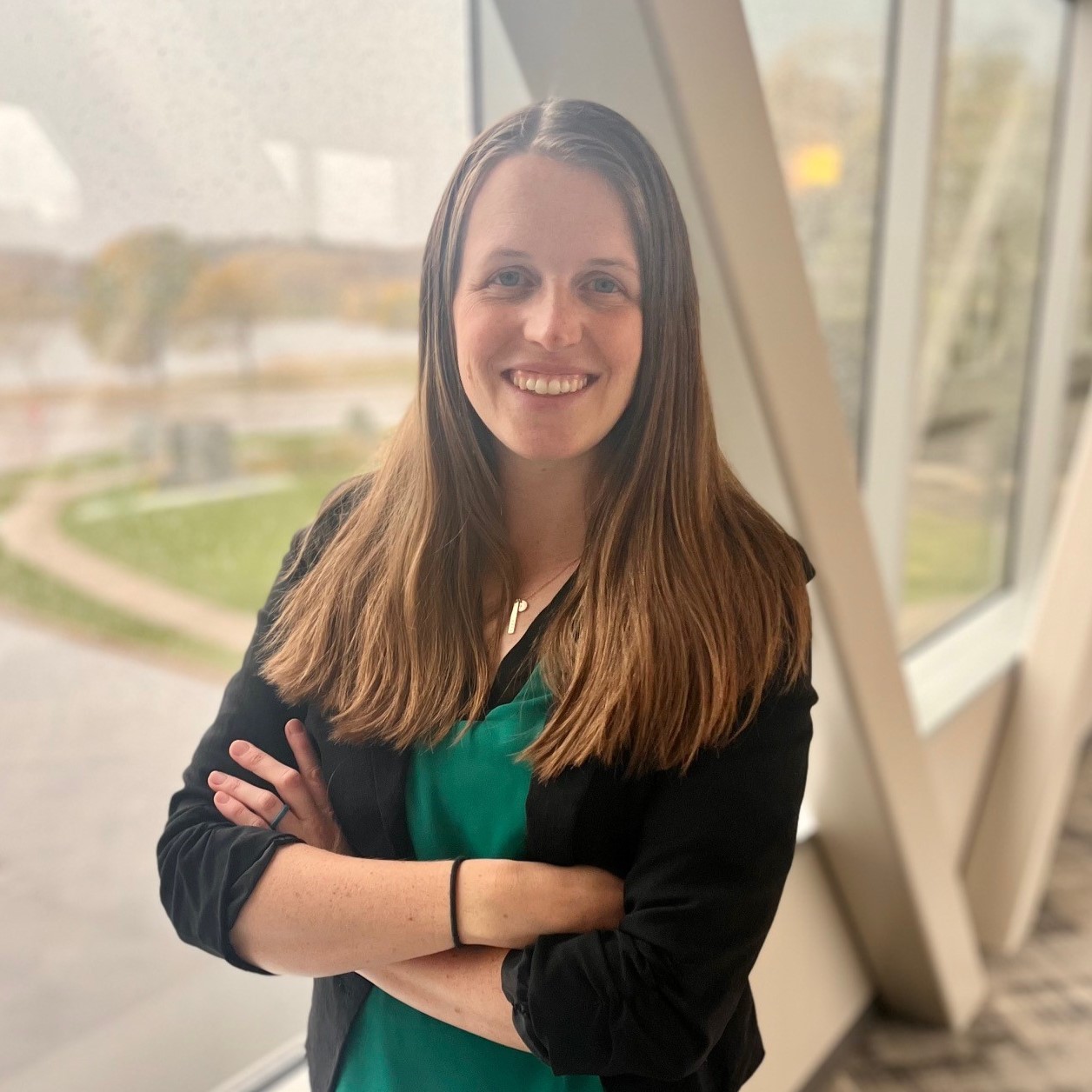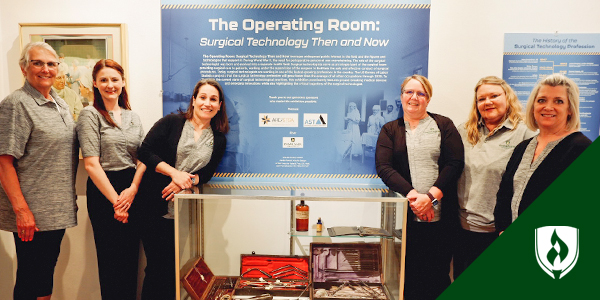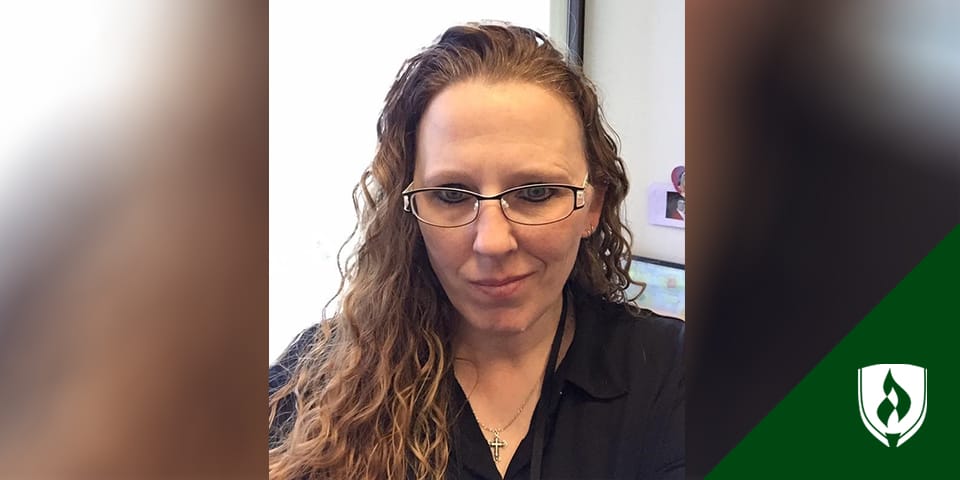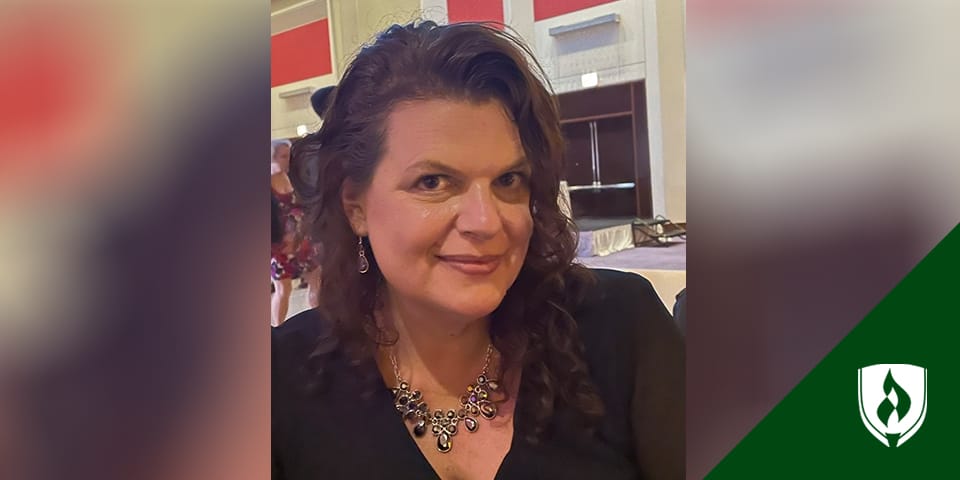Dr. MaNesha Stiff joined Rasmussen University in 2020 as the Director of Diversity, Equity and Inclusion and is dedicated to helping the school promote diversity awareness, respect, equity and inclusion for all students, staff, faculty and stakeholders in and out of the classroom.
Dr. MaNesha Stiff always knew that she wanted to work in higher education supporting underrepresented students.
“I think that it’s something that was always there in me … being an activist, being an advocate. [It’s] one of those things [where] you were either born with it or you develop it—I think I was born with it,” she says.
By the time Dr. Stiff was a junior in college, she was already writing bridge program grants for minority students. She knew that students of color were at an unfair disadvantage even before they stepped onto campus.
“I think we have to remember that the majority of our higher education institutions, and higher education in general, was never meant to be for people of color. And those ideas, whether or not we notice it or whether or not it’s apparent, they are still embedded in our systems,” Dr. Stiff says. “I knew that I wanted to push back against those systems … that’s what I’ve been doing ever since I got my Master’s and my PhD in higher education, as well as when it comes to diversity and being a diversity practitioner.”
Part of being a diversity practitioner in higher education is expanding people’s ideas about Black History Month. This important, month-long observance is not only an opportunity to celebrate diversity but also a chance to better understand the Black experience.
“Black History Month, to me, is a time dedicated to celebrating the lives, the legacy, the struggle, the essence of what it means to be Black. We celebrate us all year round, but everyone else doesn’t,” Dr. Stiff explains. “Black History Month has become an invitation for everyone to celebrate what it means to be Black and the contributions and sacrifices that we have made for this country in every aspect.”
"Black History Month, to me, is a time dedicated to celebrating the lives, the legacy, the struggle, the essence of what it means to be Black. We celebrate us all year round, but everyone else doesn't."
Many people may not realize that Black History Month has a national theme every year, even from the first year in 1928. This year’s theme is the Black Family: Representation, Identity and Diversity.
“There are so many different aspects of the Black family that we get to explore, to teach and to invite other people into yet another aspect of what it is to be Black,” she says.
Dr. Stiff believes this theme will be eye-opening for many people learning about the historical Black experience.
“It’s hard to talk about, and people don’t realize the role of the Black man in the Black family, and that has been a struggle since slavery. The first person who was ripped from the family was the father, the male figure; the first person who was sold off was the man because when the man leaves—there leaves life,” she says. “It reminds me of a picture I saw of a little girl holding up a sign that said, ‘You kill our Black men, and then you laugh at us because we don’t have a father.’”
There has also been a major impact on Black women and family.
“And Black women throughout history until this very day are the most undervalued of all races, ethnicities and genders. And yet, there is this resilience that Black women have passed on from generation to generation, be it in the absence or the presence of a Black man in the family but also just life in general,” she explains. “Black women had to nurse white babies before they were able to nurse their own babies. And this history continues to repeat itself. In some way, shape or form, Black women have always had a group latched onto [their areola] for something, to educate and enlighten, to nurture, to support, to carry the burden, to be strong, to not be the angry Black woman in the face of adversity, to be the angry Black woman in the same [situations], and the list goes on and on.”
Dr. Stiff also emphasizes how the role of extended families is different for many Black families than for others.
“It’s not uncommon to have three or four generations living in one house, and that isn’t because of hardships. It’s because that’s how we want to live; we want everyone to be there,” she says.
While the national observance may only last a month, this is an opportunity to dive into the history and impact of Black experiences all year long.
“I think that is the essence of Black History Month—that invitation, just know that it’s open all the time,” Dr. Stiff says. “Curiosity is a desire to learn and to know; to me…that’s the equivalent to celebrating. It’s not about just learning so that you learn; it’s learning and engaging to understand what it is.”
Dr. Stiff refers to a DEI (diversity, equity and inclusion) training exercise that she frequently uses. In this group exercise, everyone takes off one of their shoes and hands it to the person next to them.
“What does the shoe look like? Does it fit you? Does it match your outfit today? Is this person sensible, or are they fashionable? What would you experience if you walked in this shoe right now?
“When you have someone else’s shoe on your foot, of course it’s not going to feel the same,” she explains. “But, for one moment, you get an idea of what it feels like to walk in that shoe. That’s the experience beyond Black History Month and intercultural competency—just put that shoe on for a moment, and genuinely shift your own perspective to someone else’s.”
Many well-intentioned people are intimidated or nervous talking about diversity and inclusion. To those people, Dr. Stiff advises that they should get comfortable with being uncomfortable.
“I get uncomfortable—and I’m a DEI [diversity, equity and inclusion] practitioner. There’s this big misconception that we never get it wrong, but I get it wrong all the time,” she says.
“In order to feel comfortable and get to that next level, you have to at least engage in those tough conversations. There are going to be times that you’re going to be uncomfortable, but stay there and sit in the uncomfortable. Sometimes, you have to just sit in your own stuff.”
Another big component for Dr. Stiff when learning about the experiences of people of color is transparency. Be transparent when you don’t understand something, and don’t blame yourself for asking questions.
“I am a huge believer that wherever you are is where you’re supposed to be; the only thing you need to look at is what’s right in front of you,” she says.
That may be more difficult than it seems for many people, but Dr. Stiff doesn’t expect lofty goals from everyone—she wants everyone to take as many small steps as they need.
“Just become comfortable with the thought of engaging in the conversation, and then go engage in the conversation. [I] always say that my goal is never to push anyone or make anyone go outside of their comfort because when we’re outside of our comfort zone, we shut down,” she explains. “I just want to expand your comfort zone so that there’s room in there for you to make mistakes, to be excited about learning to ask questions and get comfortable with yourself.”
"I just want to expand your comfort zone so that there's room in there for you to make mistakes, to be excited about learning to ask questions and get comfortable with yourself."
How can you get started learning more? Dr. Stiff suggests picking a specific area that you’re interested in.
“It doesn’t have to be something heavy. A lot of people want to jump right in … things that are tough to deal with, much less self-teach yourself about,” she says. “If there’s an area that you’ve always been curious about, a culture or phenomenon … start out where you are interested, and then that’ll take you into places that you didn’t even know you were interested in.”
Dr. Stiff continues to be interested in bringing what, so far, has been her life’s work to Rasmussen University as the Director of Diversity, Equity and Inclusion. She is excited to act as a guide for Rasmussen through what she deems as a “sweet spot: the development phase.”
“It’s the learning phase; it’s coming into its own and growing,” she explains. “A lot of times, when we are quick to engage in things like Black History Month, Women’s History Month, etc., they become objective and surface level. I want to make sure that we are having tough conversations and that we understand where we are as an institution and celebrate diversity. We’re ready and at a place where it’s time for us to move forward.”
One of the first initiatives she pursued was developing a DEI (diversity, equity and inclusion) council. She and the DEI council are also trying to establish baselines, assessments and research, including talking to the community to see exactly what they need and what direction the University needs to go. Dr. Stiff explains that these are all a part of intercultural competency, one of the foundations of the DEI council.
While Rasmussen University has made diversity, equity and inclusion a priority, there is still work to be done. For Dr. Stiff, this includes providing transparency about the work they’ve done so far—and their goals as an institution.
“For every good thing, there’s something to work on. … I think we could do a better job in being a bit more transparent—where we are and where we’re trying to get to,” she explains. “Everyone can be excited with us or be in the struggle with us along the way, but if we don’t get [our story] out there, no one’s the wiser about what we’re trying to do as a University.”
Dr. Stiff also sees an opportunity to shed more light on Rasmussen University students’ experiences when it comes to diversity, equity and inclusion.
“Celebrate the students that are here and the diversity that they bring to the table. And … recognize that Rasmussen has a community that looks very different than it did even five years ago,” she says. “But if you look on the surface, no one would know that we look different than we did five years ago. I think we need to do a better job of telling our story.”
Helping Rasmussen University present that story to its students and communities is only part of Dr. Stiff’s work as a DEI practitioner. She is excited to not only engage with faculty, students, campuses and the communities that they serve but to help Rasmussen lead the way and advocate for all students.
“I think [in] my journey as a DEI practitioner, you know when you are supposed to be somewhere, and you know when it’s time for you to leave. … Your journey [as a DEI practitioner] is a little different if the institution isn’t sure if they are ready to fully engage,” Dr. Stiff says. “Rasmussen is very sure, and we’re ready to engage with diversity, equity and inclusion. Now, we may not be sure on … how tough the journey is going to be, but we know that we want to be in it … and that’s half the battle.”
To learn more about this year’s Black History Month theme, you can visit the Association for the Study of African American Life and History website.





